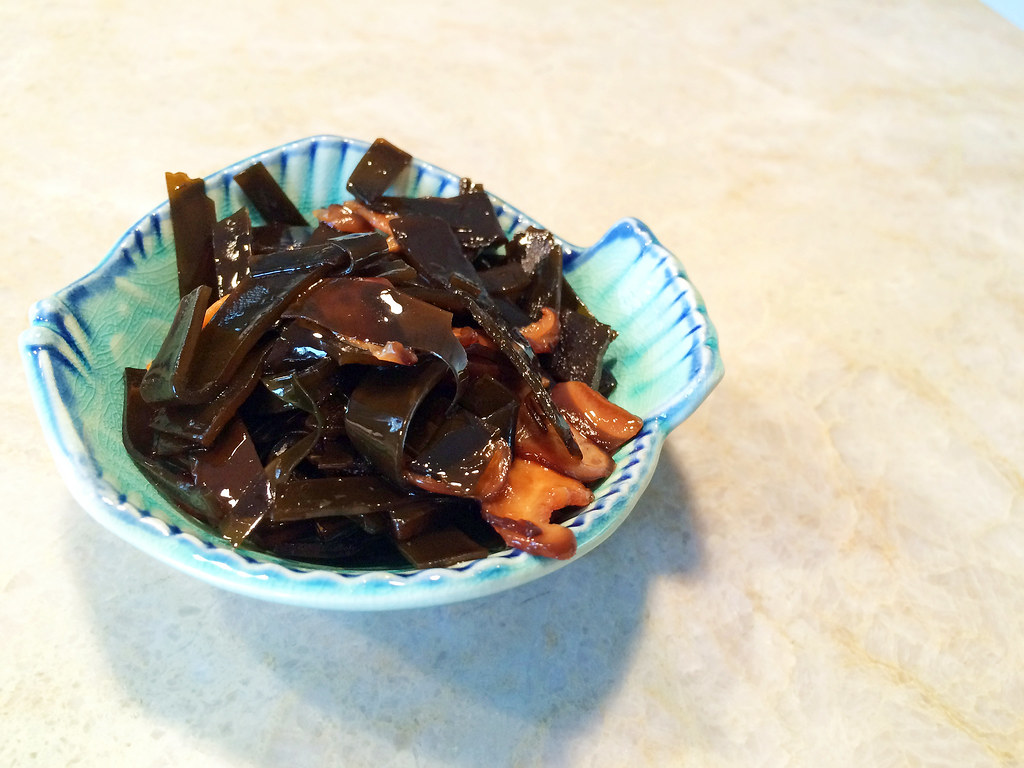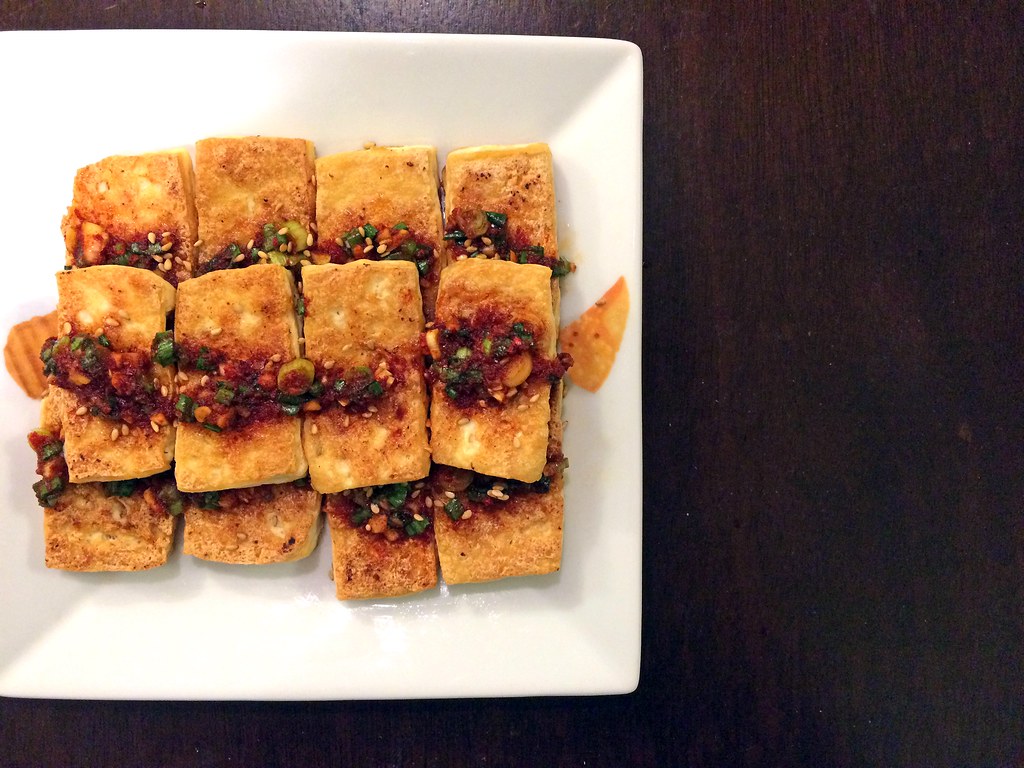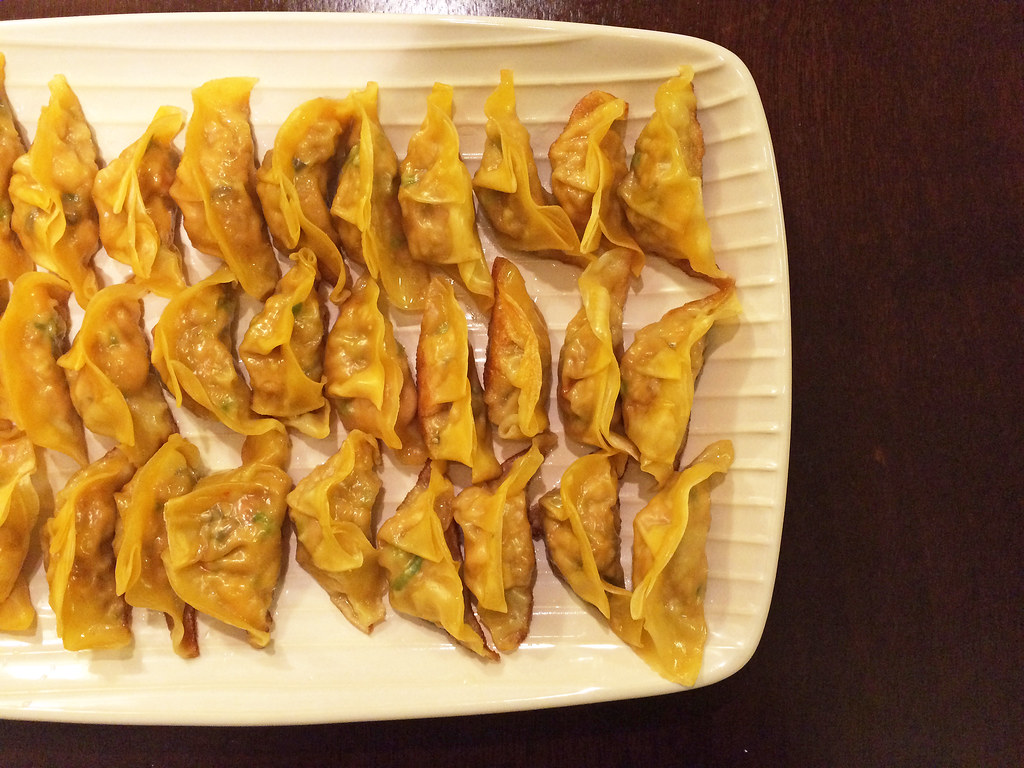Bibimbap! Fun to say, funner to eat. This colorful Korean rice bowl is endlessly adaptable. Keep the toppings vegetarian or add extra meat if you please. Go heavy on the seafood. Add your egg yolk raw. Or top it with a fried egg instead. The world is your oyster. (Ooh, how about oysters on bibimbap though? Can you do that?)
Ingredients:
8 ounces ground beef or flank steak, cut into matchsticks
1/4 cup plus 1 tablespoon soy sauce
2 green onions, thinly sliced
1 tablespoon honey
1 tablespoon plus 1 teaspoon minced garlic
1 teaspoon sugar
2 teaspoons gochugaru
5 teaspoons sesame oil, plus more for serving
4 teaspoons sesame seeds
2 cups soybean sprouts
8 ounces spinach
2 carrots, peeled and cut into matchsticks
1 zucchini, thinly sliced
3 teaspoons vegetable oil
2 Persian cucumbers, thinly sliced
8 shiitake mushrooms, thinly sliced
6 cups freshly cooked rice
4 egg yolks
1/4 cup gochujang
salt
1. Make the spicy soy seasoning: combine 1/4 cup soy sauce, green onions, 1 teaspoon garlic, sugar, gochugaru, 2 teaspoons sesame seeds, and 2 teaspoons sesame oil in a bowl. Heat 1 teaspoon vegetable oil in a skillet over medium-high heat and add the beef, stirring to break up into small pieces and until cooked through and slightly browned, about 5 minutes. Set aside.
2. Combine the meat, remaining tablespoon soy sauce, honey, remaining tablespoon garlic, 2 teaspoons sesame oil, and 1 teaspoon sesame seeds in a large bowl. Set aside.
3. Clean the soybean sprouts and pick out any brownish roots. Put the sprouts in a saucepan, add 1/2 cup water, cover, and cook over high heat for 5 minutes. Drain and mix with a pinch of salt and 1/4 teaspoon sesame oil. Set aside.
4. Blanch the spinach in boiling water for 30 seconds. Drain and rinse under cold water. Drain again and squeeze out excess water. Coarsely chop the spinach and mix with a pinch of salt and 1/4 teaspoon sesame oil. Set aside.
5. Heat 1/2 teaspoon vegetable oil in a skillet over high heat. Add the carrots and cook until slightly wilted, about 1 minute. Remove from the skillet and set aside.
6. Combine the zucchini and and pinch of salt in a bowl and let stand for a few minutes, then pat dry. Add the zucchini and saute until slightly wilted, about 1 minute. Stir in 1/4 teaspoon sesame oil, remove from the skillet, and set aside.
7. Combine the cucumber and and pinch of salt in a bowl and let stand for a few minutes, then pat dry. Add the cucumber and saute until slightly wilted, about 1 minute. Remove from the skillet, and set aside.
8. Heat 1 teaspoon vegetable oil in a skillet over medium-high heat and add the mushrooms, stirring occasionally until softened, about 3 minutes. Remove and set aside.
9. To serve, divide the hot rice between 4 to 6 bowls and arrange the vegetables and beef on the rice. Top with egg yolks while the rice is still hot. Sprinkle the bibimbap with sesame seeds, drizzle with sesame oil to taste, and serve with gochujang and soy seasoning sauce on the side.





